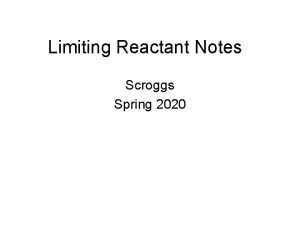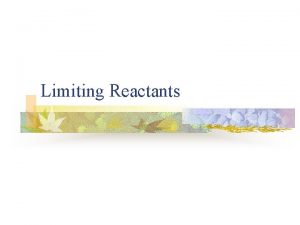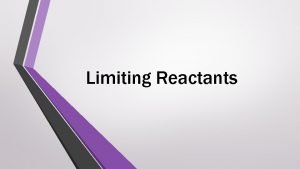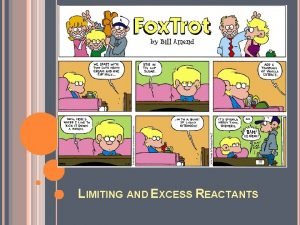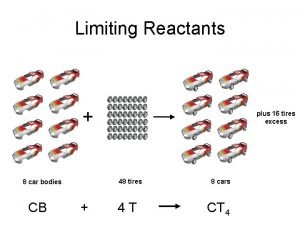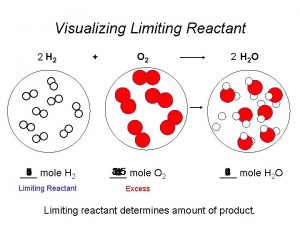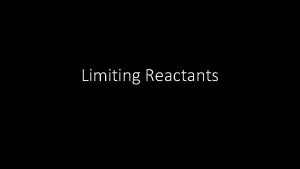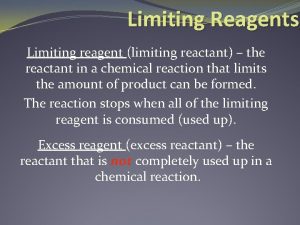Limiting Reactants Limiting Reactant n n If it






- Slides: 6

Limiting Reactants

Limiting Reactant n n If it takes 500 bricks and 1000 boards to make a house, how many houses can you make from 1600 bricks and 2000 boards? 2 houses (you have enough bricks for 3 houses but only enough boards for 2) In this example the boards would be the limiting reactant We can’t make another house without the boards.

Definition n n Limiting reactant- the reactant that determines the amount of product that can be produced because of the amount of that reactant present. Whichever one gives you the LEAST amount is the limiting reactant.

O 2 2 Fe. O 2 Fe + n If you have 87 g of Fe and 130 g of O 2 how much iron II oxide can be produced? Balance it first, then do the problem like before with both iron and oxygen. n 87 g Fe 1 mol Fe 2 mol Fe. O 71. 85 g Fe. O 55. 85 g Fe 2 mol Fe 1 mol Fe. O 130 g O 2 1 mol O 2 2 mol Fe. O 71. 85 g Fe. O 32 g O 2 1 mol Fe. O =110 g Fe. O =580 g Fe. O

Why the answer is 110 g Fe. O n n We have enough oxygen to make 580 g Fe. O but enough iron to make 110 g, therefore we can only make 110 g. The rest of the oxygen is excess (leftovers) Iron is our limiting reactant We can’t make more iron II oxide without more iron, regardless of how much oxygen we have.

Another Example 4 NH 3 + 5 O 2 4 NO + 6 H 2 O n How much NO can be produced from 52 g of NH 3 and 79 g of O 2? 52 g NH 3 1 mol NH 3 4 mol NO 30. 01 g NO =92 g 17. 034 g NH 3 4 mol NH 3 1 mol NO NO n 79 g O 2 1 mol O 2 4 mol NO 30. 01 g NO 32 g O 2 5 mol O 2 1 mol NO =59 g NO
